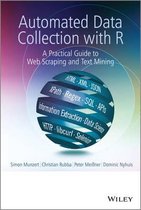1
Online Data Collection
Summary of the reading material
BLOCK 3 (feb 2021- apr 2021)
, 2
Week 2
Publish (your data) or (let the data) perish! Why not publish your data too? (Wicherts, &
Bakker, 2012)
Pros of data sharing:
• Required data archiving ensures that your data are not lost.
• Sharing the data is consistent with the universal norms of openness and rigor.
• Publishing one's data has been shown to increase citation scores of the papers which
first feature the data.
• Sharing the data encourages more research because it enables secondary (novel)
analyses.
• Sharing the data facilitates subsequent reanalysis, which may have diverse beneficial
results.
o They may result in the correction of potential errors in the analyses and in the
reporting of results and may even help prevent such errors in the first place.
o Reanalysis may emphasize the robustness of your original substantive results.
• Many funding agencies have stipulated that grantees should either write a data sharing
plan as part of proposals or make the data publicly available upon completion of the
project.
Automated Data Collection with R, Chapter 2 – HTML (p. 17)
HyperText Markup Language (HTML) is the hidden standard behind almost everything that we see and
do when surfing the web.
2.1 – Browser presentation and source code (p. 18)
What makes HTML powerful is its marked up structure. HTML markup allows defining the parts of a
document that need to be displayed as headlines, the parts that contain links, the parts that should be
organized as tables, and numerous other forms. Markup tells the browsers (parsers) how the document
is structured and the function of its various parts.
To identify which parts of the source code correspond to which elements in the browser window and
vice versa, we can use an element inspector. This is implemented in most browsers.
2.2 – Syntax rules (p. 19)
2.2.1 – Tags, elements, and attributes (p. 20)
Plain text is turned into an HTML document by tags that can be interpreted by a browser. They are kind
of named braces that enclose content and define its structural function. The combination of start tag,
content, and end tag is called element, as in:
<title>First HTML</title>
Start tags and end tags = opening and closing tags. Always enclosed by < and >. Carry the same name,
but end tag is preceded by a /. Not all types of elements have start and end tags. For example: <br>
indicates a line break and is not closed by </br>. Such elements are empty, because they do not hold any
content. Standard HTML is not case sensitive, but it is recommended to use small letters.
Another feature of tags are attributes. A widely used attribute is the following:
<a href=’’http://asdfghjkl.com/’’>Link to Homepage</a>
The anchor tag <a> allows the association of text (Link to Homepage) with a hyperlink that points to
another address. The href=’’http://asdfghjkl.com/’’ attribute specifies the anchor. This content is
automatically underlined and made clickable. In general, attributes enable the specification of options
, 3
for how the content of a tag should be handled. Which attributes are permitted depends on the specific
tag.
Attributes are always placed within the start tag right after the tag name. A tag can hold multiple
attributes that are simply separated by a space character. Attributes are expressed as name-value paris,
as in name=’’value’’. The value can either be enclosed by single or double quotation marks. However,
if the attribute value itself contains one type of quotation mark, the other type has to be used to enclose
the value:
<example quote=’He sat down and spoke: ‘’What?’’, he said.’>
<example quote=’’He sat down and spoke: ‘What?’, he said.’’>
2.2.2 – Tree structure (p. 21)
Elements need to be strictly nested within each other in a well-formed and valid HTML file. A pair of
start and end tags has to be completely enclosed by another pair of tags.
2.2.3 – Comments (p. 22)
HTML makes it possible to insert comments into the code that are not evaluated and therefore not
displayed in the browser. Comments are marked by <!-- at the beginning and --> at the end. All text in
between these character sequences will be ignored. An example:
<!-- Hi, I am a comment.
I can span several lines and can store additional content that is not displayed by the browser. -->
Comments can however still be read by anyone who inspects the source code of a page.
2.2.4 – Reserved and special characters (p. 22)
Reserved characters are used for control purposes in a language. As some characters are needed for the
markup, they cannot be used literally in the content (for example: < and >). If we want to display
something like this in the browser: 5 < 6 but 7 > 3, HTML relies on specific sequences of characters
called character entities or simply entities. They all start with an ampersand & and end with a semicolon
;. So < and > can be included in the content of a file with their entity expressions < and >. When
interpreting the HTML file, the browser will now display the character that these entities represent. The
above example needs to be written as follows:
<p>5 < 6 but 7 > 3 </p>
HTML documents can be written in numerous languages that often contain non-simple latin characters
like Ö, É, or Ø, so there is an extensive list of entities, all starting with an ampersand (&) and ending
with a semicolon (;). A few examples are below:
, 4
Note that entities can be written either by number or by name.
2.2.5 – Document type definition (p. 23)
The document type definition (DTD) informs the browser about the version of the HTML standard the
document adheres to. They are found (if included) in the first line of the HTML document.
2.2.6 – Spaces and line breaks (p. 23)
Spaces and line breaks do not translate directly into spaces and line breaks in the browser presentation.
Line breaks are ignored altogether and any number of consecutive spaces are presented as a single space.
To force spaces into the interpreted version of the document, we use non-breaking space entity
and the line break tag <br> for line breaks.
<p>Writing<br> code<br> is<br>&n
bsp;poetry</p)
2.3 - Tags and attributes (p. 24)
2.3.1 – The anchor tag <a> (p. 24)
The anchor tag turns HTML from a markup language into a Hypertext markup language by enabling
HTML documents to link to other documents. Much of the site-to-site navigation in browsers works via
anchor elements.
<a> elements can not only link to other files, but also link to specific parts of a document. It is possible
to link to anchors in a document to make navigation on a site more convenient.
Linking to another document:
<a href=’’WEBLINK>Link with absolute path</a>
Setting a reference point:
<a id=’’top’’>Reference Point</a>
Linking to a reference point:
<a href=’’#top’’>Link to Reference Point</a>





